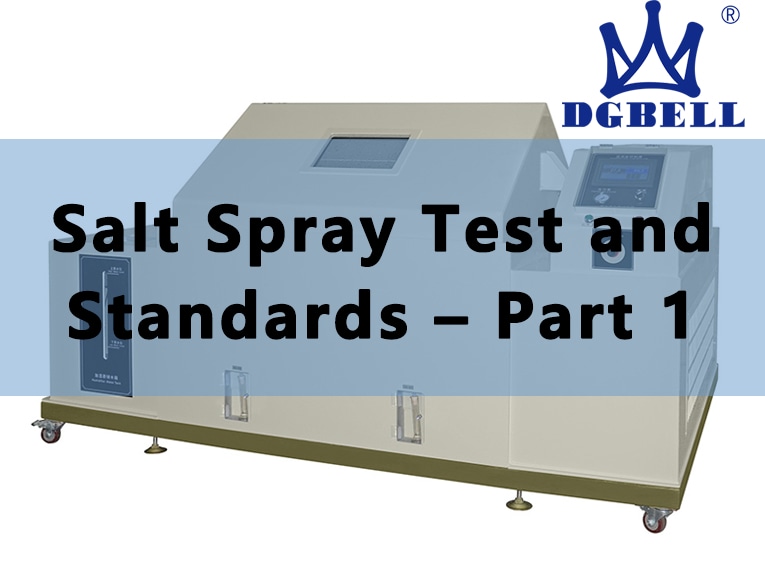
#Industry News
Salt Spray Test and Standards – Part 1
The corrosion damage of automobile metal parts has become one of the important reasons for the reduction of automobile life.
1.Salt Spray Test
The corrosion damage of automobile metal parts has become one of the important reasons for the reduction of automobile life. As early as the 1980s, the annual loss caused by automobile corrosion in the United States was as high as 20 billion dollars. Therefore, both automobile companies and consumers attach great importance to the corrosion of automobile metal parts.
Salt spray test is an important means to inspect the corrosion resistance of metal parts. It is usually divided into neutral salt spray (NSS) test, acetate spray (ASS) test, copper accelerated acetate spray (CASS) test, cyclic salt spray test, etc. Neutral salt spray test is to expose the sample to the salt spray box, use the spray device to convert the sodium chloride solution with a mass fraction of about 5% into salt spray, and carry out free settlement, so that the salt spray can fall evenly on the surface of the sample, and accelerate the corrosion of the metal surface by maintaining the regular renewal of the salt liquid film. It is applicable to metals and their alloys, metal or organic coatings, anodic oxidation films and conversion films. Acetate fog test and copper accelerated acetate fog test add acetic acid or even copper chloride to neutral salt fog to accelerate the corrosion process. The circulating salt spray test is a comprehensive salt spray test, which makes the salt spray corrosion not only occur on the surface, but also in the product through the penetration of the humid environment through the neutral salt spray test plus the constant humid and hot conditions. The cyclic salt spray corrosion test can better test the real corrosion state of the sample, and it is also the most stringent one in the salt spray test. It is mainly used for loosening complex and severely corroded parts, such as exhaust pipe, frame, oil pipe, wiper arm, etc.
2.Principle of Cyclic Corrosion Test
Corrosion is generally divided into two types, namely, chemical corrosion and electrochemical corrosion.Chemical corrosion refers to the occurrence of metal in dry gas and non electrolyte solution.
Corrosion caused by chemical change, which has no water intervention; Electrochemical corrosion occurs under the action of electrolyte and water, and current is generated during the reaction to form battery. In electrochemical corrosion, the metal with low electrode potential is the anode, and the metal with high electrode potential is the cathode. The anode loses electrons and enters the electrolyte to form anodic corrosion, while the cathode receives electrons and transfers them to the medium ions in the electrolyte solution, so that the reaction continues.
Due to the constant change of temperature and humidity, sometimes there is water intervention in the circulating salt spray test, which belongs to electrochemical corrosion, and sometimes there is no water intervention, which belongs to chemical corrosion. In the test, after the salt mist particles settle and adhere to the material surface, they quickly absorb moisture and dissolve into chloride aqueous solution. Under certain temperature and humidity conditions, this chloride aqueous solution or dissociated chloride ion infiltrates into the material system through the pores of paint film, coating or other materials, thus causing the corrosion of metal substrate.
The test generally carries out multiple cycles to simulate the extreme weather conditions such as hot and humid and dry heat in the actual environment. Especially in the test stage of water evaporation and salt deposition, the high concentration of salt solution on the surface of dry samples will accelerate the corrosion rate of the coating surface. In addition, during the process of the sample from wet to dry, the corrosion reaction was accelerated directly because its surface was in full contact with oxygen.
3.Common circulating salt spray test standards
3.1 National standard GB/T 24195 (equivalent to ISO 16151)
GB/T 24195 “corrosion of metals and alloys acid hexagram fog,” cyclic accelerated corrosion test under “dry” and “wet” conditions “specifies two methods: method a is only applicable to metals and their alloys, metal coatings (cathodic coatings), anodic oxidation coatings, organic coatings on metal materials, etc., and method B is mainly applicable to anodic coatings on steel plates, anodic coatings with conversion films, etc.
The cycle corrosion process is divided into acid corrosive salt spray corrosion, drying and moisture retention
The solution is 5% acidic sodium chloride solution, and the pH is controlled at 3.5+0.1.
Method a in the test, the sample placement angle and vertical direction shall be 20 ° ± 5 °, the salt spray collection area shall be 80 cm, and the salt spray sedimentation rate shall be within the range of (1.5+0.5) ml/h after continuous spray for 24 h. The test cycle depends on the corrosion degree of the parts, and is generally selected within 3~180 cycles.







